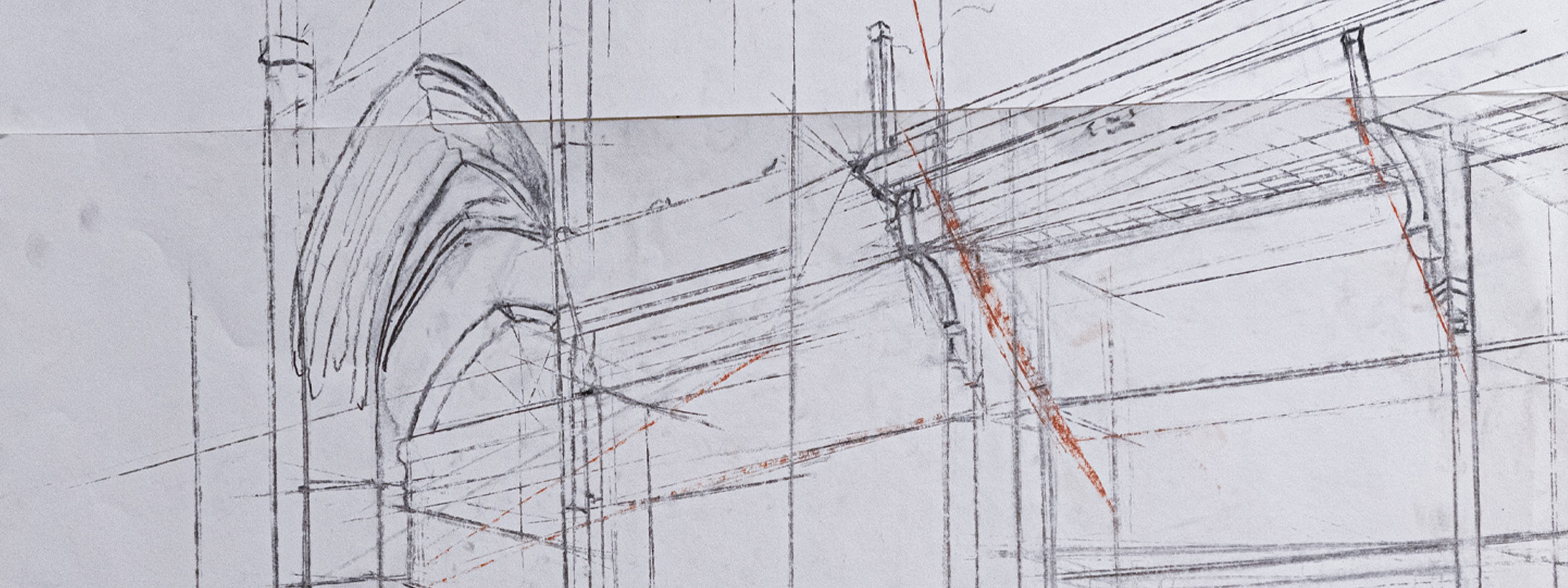Clare Ortblad will receive her Master of Design (MDes) degree in June. She chose a three-year MDes program, rather than two years, so that she could have more time to hone her design skills and the flexibility to take more electives.
Staff member Jeanette Mills asked her questions about her background and her experiences as a graduate student.
JM: Provide some background on where you are from, where you did your undergraduate studies, and why you chose UW for your Master of Design. Was there something that made you realize the time was right for graduate studies?
CO: My background story is a circuitous one! Even answering where I'm from. Seattle is my hometown, but I actually grew up overseas. My parents' jobs took us to Japan, the Philippines, Switzerland, and Germany. Once I finished high school in Berlin, I knew I wanted to come back to the US for college. I ended up attending the Rhode Island School of Design for a year and eventually transferred to the University of Washington to earn a Bachelor of Arts degree in International Studies. Fast forward a few years — my wanderlust brought me to Cambodia where I worked for a small newspaper, The Cambodia Daily, and fell in love with graphic design while laying out the newspaper using an old version of Quark (yes, Quark! I've come a long way since those days). Following this stint, I moved back to Washington State and worked as a graphic designer for a local newspaper company, Sound Publishing, for a few years. During this time, I realized I wanted to take my skills to the next level and get a formal education in design. I had heard that the UW's design program was a strong one, and so I looked into it, applied, and I'm now in my last year of graduate school.
JM: How much teaching have you done, and what has that been like?
CO: I've been a TA for three classes (Design Foundations, twice, and Survey of Design History) in the Division of Design, and I taught a visual communication design course for the HCDE department in 2018. Each experience was really rewarding (and challenging). I hadn't taught before coming to grad school and so I was pretty intimidated at first, but once you're thrown into it and gain experience, it can be quite fun. I learned how to lead and facilitate learning among groups of about 20 or more students through giving critiques, lectures, and in-class activities. It's a lot of work and very tiring (especially being the instructor of course versus a TA), but these teaching experiences have been a significant contribution to my overall education in grad school. I've learned a lot through them — sometimes without me even realizing it until much later — and feel that I am a better designer for it. Another teaching perk is that you get to witness students' growth over the course of about 10 weeks, which is exciting and rewarding in itself.
JM: What is a specific thing you’ve learned about yourself and/or the discipline of design during grad school?
CO: One thing that I learned about myself as a visual designer during grad school is that I am fascinated by the theories of visual perception. The Gestalt Principles, for example, have been a part of my education. I try to be as cognizant of these principles while designing and apply them as much as possible.
JM: What made you choose your thesis topic? Is it something you may pursue in the future?
CO: My thesis topic — in a nutshell — is about how visual stories might motivate people to reduce the amount of plastic waste they produce. I chose the topic because it's an environmental issue that worries me, and it's something that I enjoy researching. I've always enjoyed any project that allows me to learn something new. I honestly don't know if the topic of plastic pollution will come back into my life through future jobs, but I do hope that visual storytelling remains a constant in my future endeavors.
JM: What can you say about the journey of being a graduate student?
CO: A couple of tips on being a graduate student: if you want to collaborate with someone or an organization outside of the department, start as early as possible! Two years flies by. It also takes a lot of time and persistent emailing to get collaborations going. Also, there will be rough patches during graduate school and that is perfectly normal! I've learned a lot about knowing my own limits, when to take care of myself, and when to reach out to my peers for help.
JM: From the start of your MDes studies to now, what has changed (if anything) in terms of your design work and where you plan to go with it?
CO: Oh man, my design work has improved so much over the past three years! This education — along with the plentiful opportunities to get feedback from my peers and the faculty — has helped me grow so much as a designer. The execution of my design work is of a higher caliber, and I'm much more thoughtful about the process work that goes into it — from researching, to prototyping, and to making design decisions. Post grad school, I plan on further developing my strengths in visual communication design through whatever opportunities come my way.
JM: What are your plans after graduation?
CO: Get a graphic/visual designer job! I don't know where I'll land yet, but it will be in the Seattle area.

